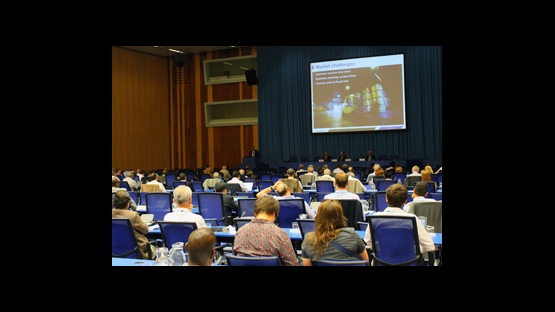The IAEA's International Symposium on Uranium Raw Material for the Nuclear Fuel Cycle (URAM 2014), which took place last week from 23-27 June, was rich with signs that the uranium sector is exploring a smarter version of itself.
When the URAM-2005 convened, the market price of uranium oxide, commonly referred to as yellow cake, was quite low. By URAM-2009, in the immediate wake of a global financial crisis, uranium oxide prices had at least doubled and it was expected that demand for uranium was on the rise. However, after the Fukushima Daiichi nuclear accident in Japan in 2011 there was a general downturn in the uranium mining sector, and, by URAM-2014, uranium oxide market prices had substantially decreased, with the short term, or spot, prices effectively reaching the same level as in 2005.
Although uranium oxide's open market prices impact the sector, factors like a country's energy policy, pricing, provision, affordability and access may tell us even more about the uranium mining industry. The challenge is in understanding the critical role of uranium as fuel and the wider role of nuclear power in energy security and in a country's energy mix. Nevertheless, lower uranium oxide prices help trigger additional innovation and efficiency in the industry.
These and other topics were addressed by prominent experts at URAM-2014. Canadian expert Amir Adnani proposed that the industry consider innovation in financing, while Olga Gorbatenko, an expert from Kazakhstan, pointed out the necessity of building and operating the "smart mine", which would implement advanced technologies aimed at energy savings, environmental sustainability and production efficiency.
The Symposium sessions and discussions among some 250 participants revealed that the industry is shifting away from its focus on simply traditional technologies to making the leap to new ground-breaking approaches. Julian Hilton, an expert from the United Kingdom, and Roberto Vilas-Boas, an expert from Brazil, outlined an industry orienting itself towards being smarter and more engaged with stake-holders as well as more efficient, creative and agile. A number of issues discussed during the Symposium highlighted:
- Priority attention to social licensing and stakeholder engagement
- Systematic and ongoing investment in uranium exploration
- Roll-out of new technologies across the life-cycle
- Focus on sustainable recovery of low-cost resources
- Mobilisation of scientific and intellectual capital
- Refined taxonomic classification and reporting systems
As the industry evolves, these new approaches will contribute to new production models based on explorative, analytical and modelling tools, such as cutting-edge flow sheets to recover multiple commodities including rare-earths and, in some cases, thorium; waste hierarchy techniques for the recovery of unconventional uranium resources; entrepreneurial financing instruments; and approaches for raising general awareness for equitable distribution of benefit between stockholders and stakeholders. As these new methods emerge, explained Michel Cuney, Chairman of the Symposium, a new generation of experts will be educated and trained to apply these forward-looking techniques.


